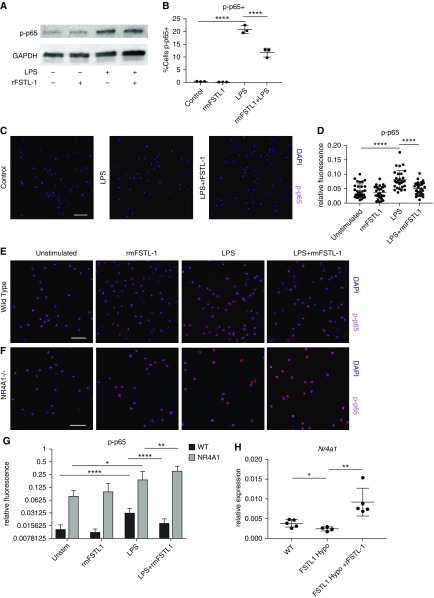Figure 5.
Exogenous FSTL-1 (follistatin-like 1) treatment of macrophages reduces nuclear factor-κB p65 phosphorylation (p-p65) via Nr4a1. Exogenous FSTL-1–treated RAW 264.7 macrophages had decreased nuclear factor-κB p-p65 following LPS stimulation as assessed by (A) Western blot and (B) fluorescence-activated cell sorter (n = 3 per treatment). Confocal immunofluorescence of RAW 264.7 for p-p65 at 40× magnification shows (C) representative images and (D) quantification of p-p65 fluorescence (per cell) following no treatment (control), LPS-treatment (LPS), and LPS +rFSTL-1. (E–G) Confocal immunofluorescence at 40× magnification for p-p65 of primary alveolar macrophages from wild-type (WT) (E) and Nr4a1−/− (F) mice with fluorescence quantification (G) (from one representative experiment). (H) Nr4a1 gene expression of WT, FSTL-1 hypomorphic (Hypo), and rFSTL-1–treated FSTL-1 Hypo lung (n = 4–5 per group from one representative experiment). (C, E, and F) Scale bars, 50 μm. *P < 0.05, **P < 0.01, and ****P < 0.0001. rFSTL-1 = recombinant FSTL-1; rm = recombinant murine; Unstim = unstimulated.

